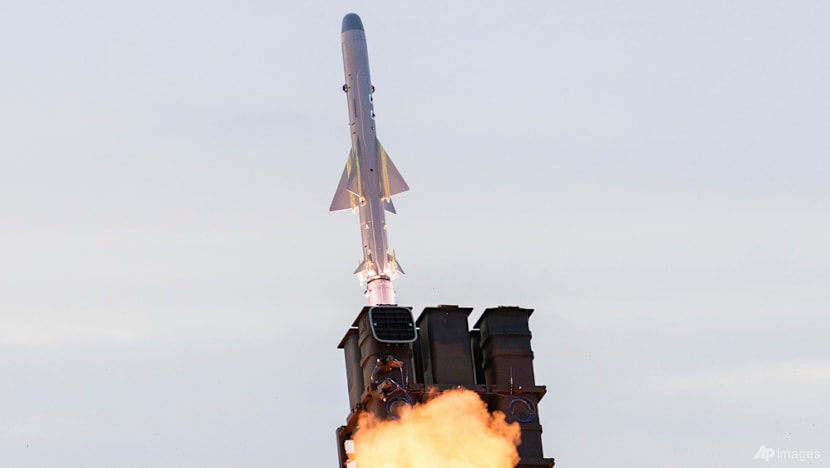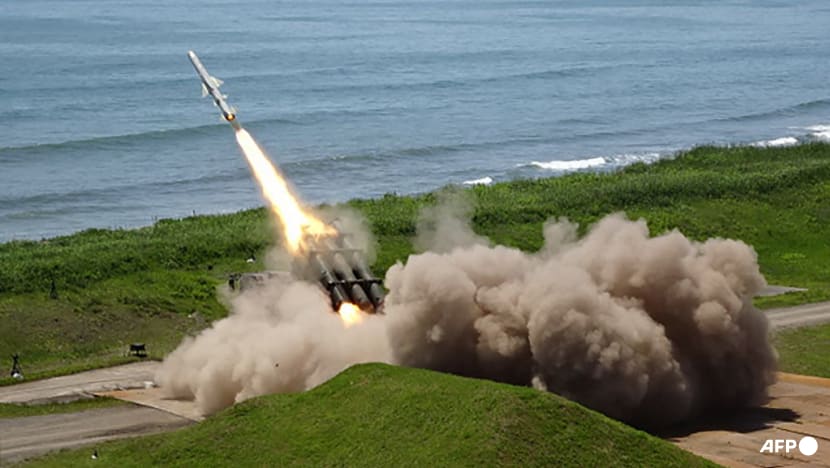Commentary: Japan faces a fundamental dilemma on counterstrike missiles
There is increasing political and public support in Japan for counterstrike capabilities as a deterrent. But there’s a misleading perception that oversimplifies the issue, says political scientist Yasuo Takao.


This audio is generated by an AI tool.
PERTH: Eighty years after World War II ended and forced its pacifist identity, Japan now finds itself in the middle of a volatile security environment. Against the backdrop of Russia’s invasion of Ukraine in 2022 and intensifying US–China rivalry, there’s a sense of unease that the unthinkable has become plausible.
This has tilted public opinion toward greater defence spending and support for counterstrike capabilities – in a country committed to its post-war constitution, shielded by US security guarantees and the only one for which nuclear warfare is no abstraction.
On Aug 29, Japan's Ministry of Defense announced concrete plans to deploy domestically-produced long-range missiles as part of the country's counterstrike capability, starting in March 2026. Tokyo also plans to acquire several hundred US-made Tomahawk cruise missiles. Together, these developments mark the practical realisation of Japan’s long-debated enemy base strike capability.
Defence is a central issue in the ruling Liberal Democratic Party’s leadership race on Oct 4, which will also decide who succeeds Shigeru Ishiba as prime minister. Frontrunner Sanae Takaichi supports broad constitutional revision and argues Japan should acquire counterstrike capabilities as “a highly effective measure.”
But at the heart of this debate lies a fundamental dilemma: Do counterstrike capabilities truly enhance Japan’s security through deterrence, or do they risk dangerous escalation, constitutional ambiguity and regional mistrust?
SHIFTING DOCTRINE
Since 1947, Article 9 of Japan’s Constitution has renounced war as a sovereign right and prohibited the maintenance of “war potential”. Over decades, successive governments reinterpreted this clause to allow for a military, known as the Self-Defense Forces (SDF) under the principle of senshu boei – exclusively defensive defence.
Codified in the 2022 Defense White Paper, senshu boei rests on three restrictions: that force can be exercised only after Japan has already come under armed attack; that the use of force must be limited to the minimum necessary for self-defence and that capabilities must remain confined to this minimum threshold.
But the calculus is shifting.
Since 2016, North Korea has deployed solid-fuel missiles that are harder to detect pre-launch, and since 2019 has tested ballistic and hypersonic systems with erratic trajectories that complicate interception. Japan thinks its current missile-defence network can no longer fully cope. In the past year, Chinese and Russian aircraft have also intruded into Japanese airspace.
Public opinion has clearly flipped. Where a 2006 Yomiuri poll showed 39 per cent of respondents in favour of counterstrike capabilities and 55 per cent in opposition, a Yomiuri–Waseda survey in mid-2022 found 62 per cent supported and 35 per cent opposed these weapons.
In December 2022, the Kishida government approved a landmark defence overhaul, authorising the development of counterstrike capabilities – framed as an extension, not a rejection, of senshu bōei.
Tokyo’s logic was clear: Once an adversary launches a missile, interception is uncertain. To protect its citizens, Japan must be able to strike enemy launch sites, but only if an attack is deemed imminent.
CAPABILITY AND CREDIBILITY
While the government frames counterstrike as a form of deterrence, a persistent gap exists between stated ideals and operational realities. A common but misleading perception is that simply possessing counterstrike capabilities makes Japan secure.
Proponents argue counterstrike raises the costs of aggression, strengthening deterrence. But deterrence rests on two pillars: the physical capability to inflict unacceptable costs on an adversary and the political will and legal clarity to credibly use those means.
Japan may soon have the capability, but its credibility is undercut by constitutional limits, political caution and regional sensitivities. Without credibility, even advanced weapons may fail to deter – a paradox where the pursuit of deterrence could weaken deterrence itself.
The Tomahawk purchase highlights the contradictions. These long-range missiles, while powerful, cannot reliably destroy adversary weapons in the narrow window before launch.
Consider North Korea: Its missiles are fired vertically, revealing no target until after takeoff. By the time Japan detects the launch, confirms their destination and responds, Tomahawks may find their target too late.
This leaves Japan trapped between two unattractive options: Strike too late and it is meaningless. Strike too early and it risks undermining Article 9 and eroding Japan’s reputation for restraint.
Another challenge is intelligence. Japan’s ability to detect and attribute imminent attacks remains uncertain, given the opacity of Chinese and North Korean missile forces, as well as the proliferation of hypersonic missiles and cyber interference.
The risk that faulty judgment could spark escalation is growing.
This misperception that mere possession guarantees safety makes the public vulnerable to manipulation. Adversaries can exploit it by spreading narratives that amplify division or pressure policymakers into rash decisions. Thus, counterstrike is also an information security challenge.

THE PACIFIST BRAND
For decades, Japan’s pacifist identity reassured its citizens and gave Tokyo moral legitimacy in East Asia. Counterstrike blurs this line.
It signals to neighbours that Japan is edging toward offence, no matter how much it is couched in defence. Given historical sensitivities, even symbolic shifts carry risks of mistrust and strategic backlash, particularly from China and South Korea.
For Japan, strengthening security means not just acquiring new strike systems, but also preserving the credibility of its pacifist commitments. Deterrence works by threatening costs; reassurance works by reducing incentives for conflict. They are necessary counterparts.
Japan’s shift cannot be understood outside the US-China rivalry. Washington has long pressed Tokyo to assume greater security responsibilities. Counterstrike fits into this pattern of alliance “burden-sharing.”
Yet this creates entrapment risks. If Japan demonstrates willingness to strike enemy bases, adversaries may perceive it as a forward partner in US military strategy. This perception could make Japan a target in any Taiwan crisis or US-China confrontation, even if Tokyo itself seeks restraint.
THE REAL TEST OF LEADERSHIP
Japan faces a fundamental choice: pursue counterstrike capabilities that offer limited deterrence but high risks, or craft a strategy that makes conflict less likely by combining defensive strength with credible restraint.
A more constructive path for Japan’s security would involve a clearer doctrine emphasising defensive aims, crisis management channels to prevent inadvertent escalation, alliance mechanisms for de-escalation and information resilience to counter disinformation and build public understanding.
The real test of leadership will be whether Tokyo can balance the imperatives of protecting its citizens without undermining the principles that have anchored its security for decades. Failure to strike this balance risks dragging Japan into the very conflicts it seeks to deter.
Dr Yasuo Takao is Adjunct Senior Research Fellow of Political Science at Curtin University.



















